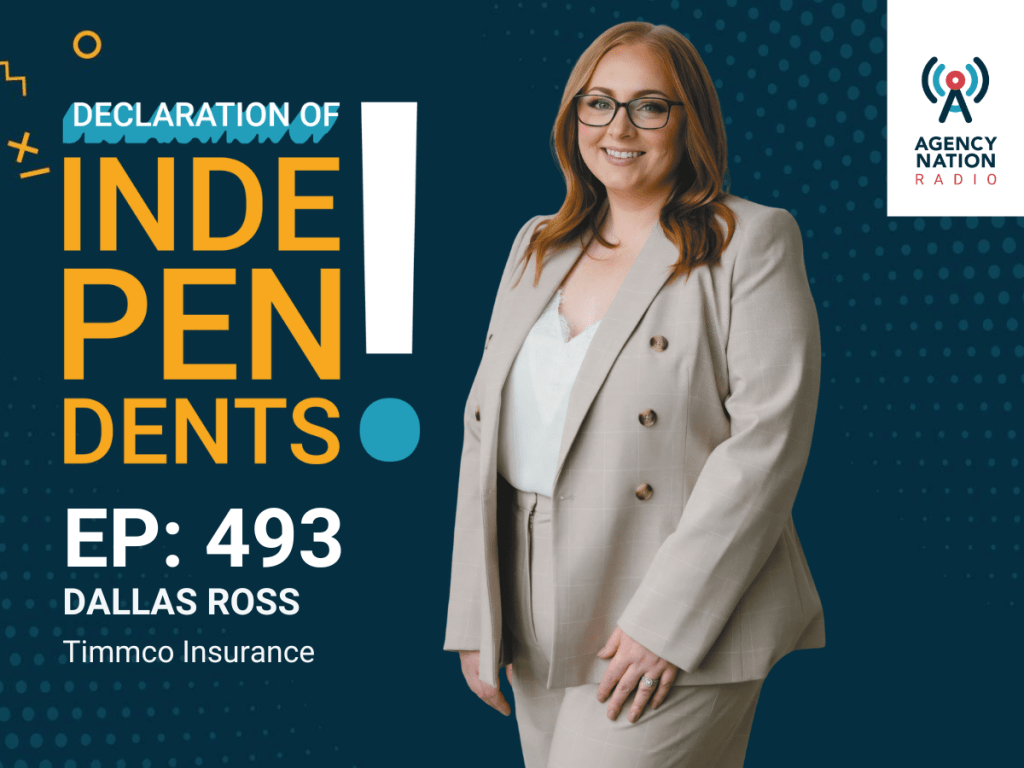A New Perspective on Retirement Plans
By: Dave Evans
It’s not easy determining the strategic direction of an independent insurance agency these days. First, the soft market for property-casualty insurance has persisted longer than anyone had anticipated, although the recent spate of storms and worldwide disasters may result in a hardening of the market. Second, agencies that have developed a significant health insurance practice are dealing with the impact of the MLR (Minimum Loss Ratio) requirement of the Patient Protection and Affordable Care Act (PPACA), which has put pressure on agent commissions. Third, price increases on existing Long-Term Care insurance (LTCi) policies and the notice by major LTCi issuers that they have or will not issue new policies has left many agents pondering where to focus their efforts.
Most independent insurance agencies do not have a significant retirement plan practice unless they have a knowledgeable producer. Over the past year, retirement plan advisors have been front and center in the overall financial conversation. Starting Jan. 1, 2012, the Department of Labor (DOL) will expand the “fiduciary” standard to all advisors—registered investment advisors and registered representatives—to retirement plans. Additionally, the DOL’s comprehensive disclosure requirements, which will also become effective, will require significantly more transparency for the investment related expenses, recordkeeping and other plan costs. The conventional wisdom is that many registered representatives may not feel comfortable in this environment and will exit the retirement plan field to focus on individual planning advice like providing guidance on distribution planning and other specific retirement considerations.
It would seem that against this backdrop, retirement plans are not an attractive avenue for independent insurance agencies to consider. And, while there are reasons to pause given the intersection of government rules, independent agents should not dismiss the opportunity thanks to a relatively old tool that has received renewed attention from insurance companies: the Multiple Employer Pension (MEP). MEPs are not to be confused with Multi-Employer Plans, which are commonly known as “Taft-Hartley Plans”; these were named after the federal legislation that provided for trade unions to have a common plan for various contributing employers, subject to a collective bargaining agreement (CBA). Why MEPs, and Why Now?
As opposed to traditional retirement plans like 401(k)s that have separate plans for each sponsor, an MEP operates under a single “umbrella” structure that enables multiple businesses to offer a retirement plan. This means that the MEP is responsible for:
This laundry list of requirements creates a burden for smaller employers and adds to the expense (audits aren’t required for plans with less than 100 employees). Given that retirement plans are governed by the Employee Retirement Income Security Act (ERISA) and that there can be significant financial and civil repercussions—and even criminal consequences when the behavior is willful—it isn’t a surprise that a lot of employers are nervous about offering a qualified retirement plan to their employees. And, the retirement plan rules can put fear into advisors who worry that their clients may unintentionally run afoul of them and later try to hold the advisor responsible for non-compliance.
“A MEP can help solve a number of these issues, but many agents and advisors have misconceptions about MEPs,” says Pete Walsh, vice president of product and marketing strategy for AUL Retirement Services. “Many plan advisors don’t understand that a MEP can still allow for significant plan design flexibility [and] the plan sponsor can select the provisions that reflect their objectives.”
It’s All in the Details
The MEP plan sponsor typically retains an outside investment firm to monitor the investment offerings, and that retained firm assumes co-fiduciary responsibility under ERISA Section 3(38). This is important to plan advisors, as the 408(b)(2) regulations will require financial professionals to denote whether or not they are a fiduciary on their clients’ plans. Using the MEP approach, the financial professional will not have to assume that liability. Typically there is a menu of identical investment options for all adopting employers. With regard to recordkeeping requirements, the insurance company (or a subsidiary) can choose to perform this function or it can select an independent administration firm. As a result, the MEP typically serves as the plan sponsor, trustee and contractual fiduciary on the plan. Of course, since the MEP is charged with overseeing the IRS qualification and operation of the plan, adopting employers that do not follow the rules or rectify errors will have to exit the MEP. Since the MEP is a single plan, sponsoring the document (the adoption agreement does allow for various choices), filing one Form 5500 and having an audit performed for the MEP does not allow for flexibility to have an adopting employer who is not following the rules; consequently they must require the non-compliant adopting employer to exit the plan. The related operating expenses for MEPs are billed to each adopting employer. They usually consist of a plan setup charge (sometimes not charged), a per participant charge for the recordkeeping and related services and an annual administrative charge for the adopting employer. Some MEPs use the adopting employer’s overall fund balance and/or average participant account balance in their menu of fees, and plans with higher balances may have little or no out-of-pocket administrative charges.
The Benefit to Customers
With regard to investment expenses, if separate accounts or mutual funds are used, the underlying investment expense is charged to plan participants, plus a contract expense charge. The contract expense charge typically has breakpoints and decreases based on the overall adopting employer’s plan value. The contract expense charge may be fairly high for a start-up plan but scales down as the plan’s balances grow. For a retirement plan with several million dollars, the contract expense charge may be 50 basis points or less, which represents a good value to the adopting employer and plan participants. If a stable value option is offered, the declared interest rate is typically net of this charge. For a very small plan (less than $1 million) with a fair amount of employee turnover, an MEP may not be the best solution. When an employer merges its current retirement plan into a properly-structured MEP, it ceases to be the sponsor of the plan. That may be attractive for a current plan sponsor to consider who feels weighed down with the complexity, cost and has concerns with being responsible for investment selection. Insurance agents who are not security-licensed can still offer MEPs through carriers like AUL, Mutual of Omaha, The Standard and Lincoln National. Agent/advisor compensation is typically 25–50 basis points depending on the MEP’s contract expense charges. When agents consider the overall benefit to their client coupled with the transfer of much of the fiduciary risk, MEPs may represent the best way for many agents to reach out to their commercial insurance customers on retirement planning. If you don’t take the time to have a conversation with your clients about MEPs, your competitors might beat you to it.
Dave Evans (dave.evans@iiaba.net) is a certified financial planner and an IA contributing editor.
The Misunderstood MEP
For plan advisors, the MEP structure enables them to transfer much of the fiduciary burden to the MEP. This is one of the major reasons that advisors have been interested in the approach. Of course, not all of the fiduciary duty can be offloaded. Advisors and plan adopters still need to review the reasonableness of the investment charges and other fees charged to the plan. Another misconception that many insurance agents have is that MEPs have to be commonly owned or have similar groups of employers like a workers compensation safety group or a PEO (Professional Employer Organization). In reality, a MEP can and typically does have different employers, like an architectural firm, a medical practice and a car dealership. In fact, the MEP plan sponsor is typically the insurance company that created the MEP and then offers it to adopting employers to join. —D.E. |










